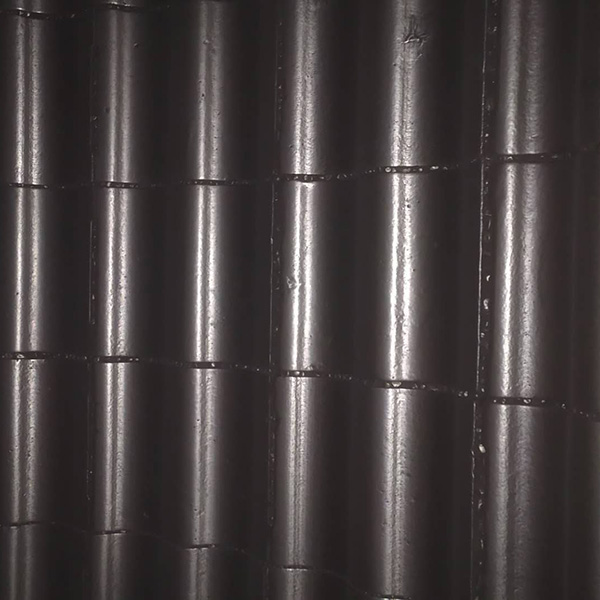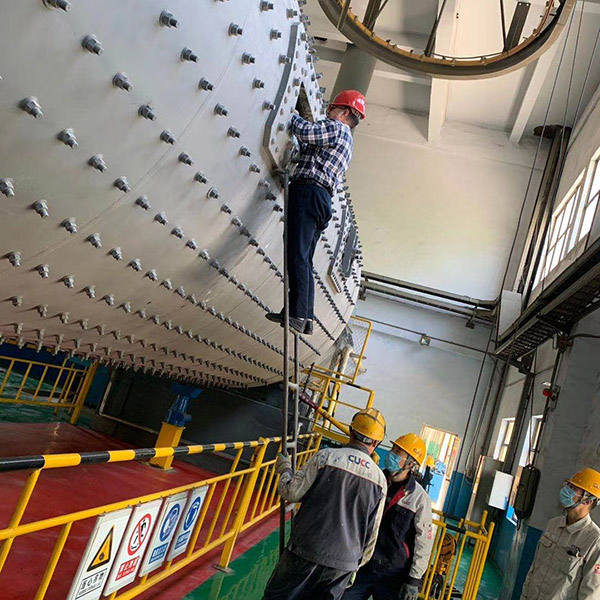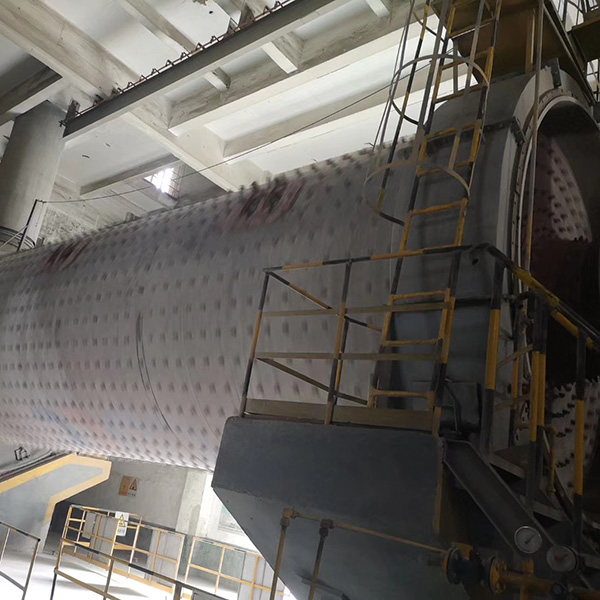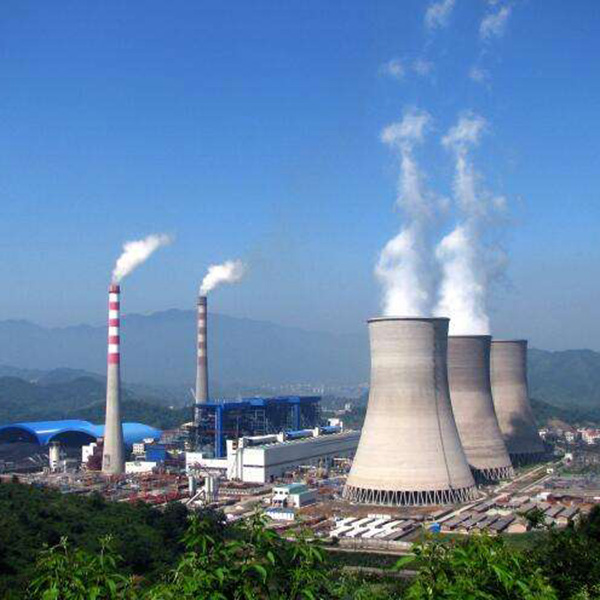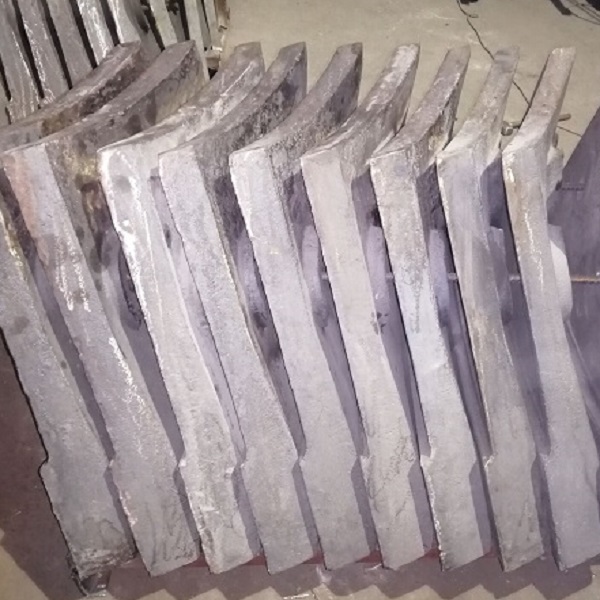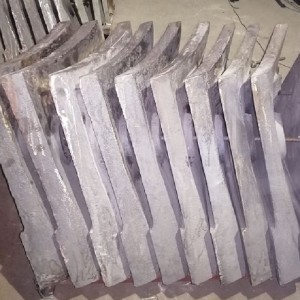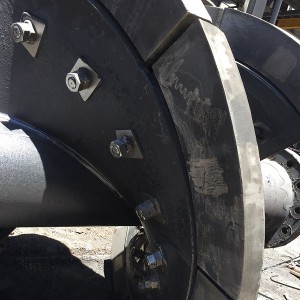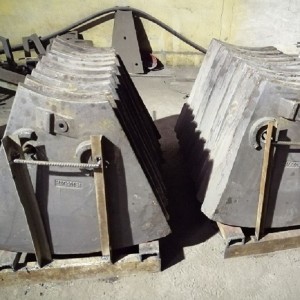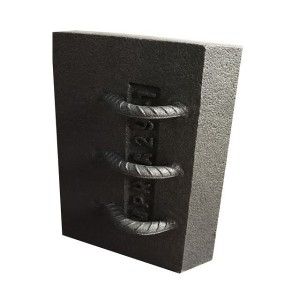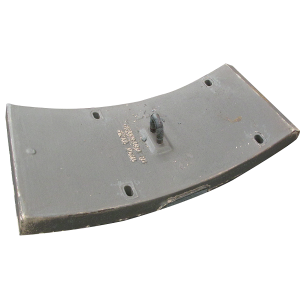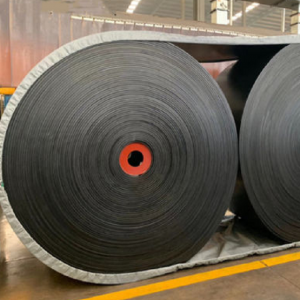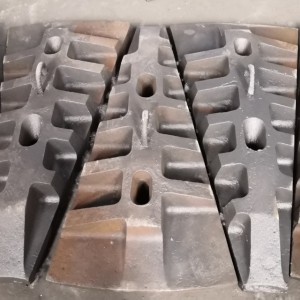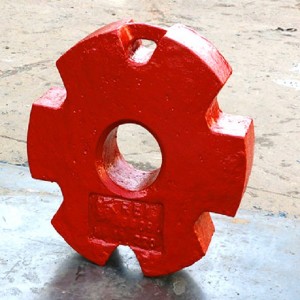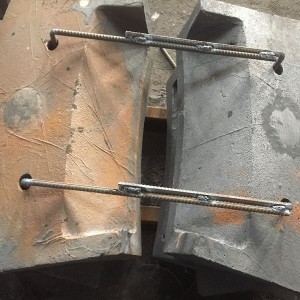26%Cr 28%Cr High Cr Grinding Mill Liner
Short Description:
Product Description
White Iron Ball Mill Liner in general refers to the alloy white iron with the chromium content at 12%~26%, the carbon content at 2.0%~3.6%. White Iron Ball Mill Liner distinctive features is that the M7C3 type eutectic carbide micro hardness is HV1300~1800. White Iron Ball Mill Liner’s eutectic carbide is distributed on the base, martensite(the most hard metal matrix organization), in discontinuous network and isolation, which reduces the fragmentation of the matrix effect. As a result, the high chromium Ball Mill Liner has high strength, strong toughness and good wear resistance features , which is widely used at Mining ,Cement and power industry.
White Iron Ball Mill Liner is recommended to be using at low impact working condition such as:
1. Belt conveyor liner for Mining industry.
2. Cement plant Ball Mill.
3. Chemical industry Ball Mill.
Chemical Elements
|
Name |
Chemical Elements (%) |
|||||||
|
C |
Si |
Mn |
Cr |
Mo |
Cu |
P |
S |
|
|
High Cr Ball Mill Liner Cr26 |
2.5-3.3 |
0-0.8 |
≤2.0 |
23--28 |
≤3.0 |
≤1.2 |
≤0.06 |
≤0.06 |
|
High Cr Ball Mill Liner Cr15 |
2.3-3.3 |
0-0.8 |
≤2.0 |
14--18 |
≤3.0 |
≤1.2 |
≤0.06 |
≤0.06 |
Physical Property & Microstructure
|
Name |
HRC |
Ak(J/cm2) |
Microstructure |
|
High Cr Ball Mill Liner Cr26 |
≥58 |
≥3.5 |
M+C+A |
|
High Ball Mill Liner Cr15 |
≥52 |
≥4.5 |
M+C+A |
|
M-Martensite C- Carbide A-Austenite |
|||
Note: Adjust the chemical content or add other alloying elements of Ball Mill Liner according to customer needs is available.
Product Package
● Steel Pallet, Wooden Pallet and Wooden Box

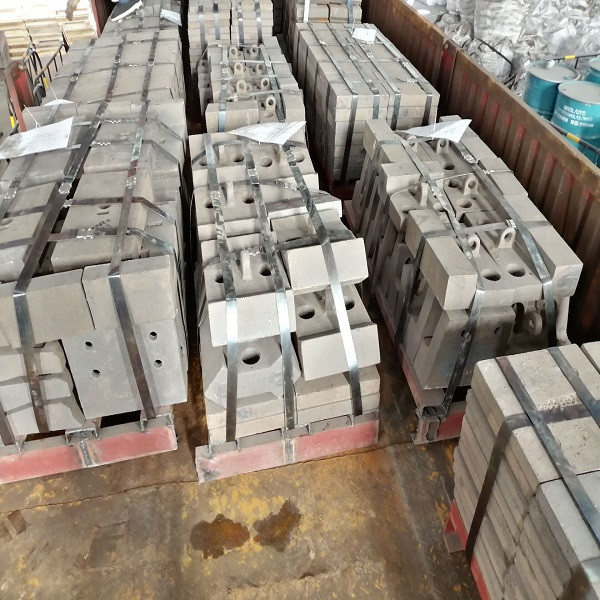
● Customized according to special packing requirement.
Application
Our White Iron Ball Mill Liner are widely used in the grinding stage for mining industry, cement industry, thermal power plant, paper-making and chemical industry etc.
A ball mill is a type of grinder used to grind, blend and sometimes for mixing of materials for use in mineral dressing processes, paints, pyrotechnics, ceramics and selective laser sintering. It works on the principle of impact and attrition: size reduction is done by impact as the balls drop from near the top of the shell.
A ball mill consists of a hollow cylindrical shell rotating about its axis. The axis of the shell may be either horizontal or at a small angle to the horizontal. It is partially filled with balls. The grinding media are the balls, which may be made of steel (chrome steel), stainless steel, ceramic or rubber. The inner surface of the cylindrical shell is usually lined with an abrasion-resistant material such as manganese steel or rubber lining. Less wear takes place in rubber lined mills. The length of the mill is approximately equal to its diameter.
When it comes to chrome moly white iron mill liners, H&G Mill Liners had focused this material for long time. Our chrome moly white iron mill liners span life more than other foundries mill liners.
This cast material is considered to be the ultimate developed and used to date for abrasion resistance in Milling. It is commonly used in cement mills and some of the largest Ball Mills in the world and where performance has not been bettered to date.
The Features
- 600 to 700 BHN white iron
- Large ball mills
- Malleable Iron: cast as white iron,then malleabilised, or heat treated, to impart ductility. Consists of tempered graphite in an a-ferrite or pearlite
matrix - Common in cement mills
- Used for abrasion resistance
When it comes to Ni-hard iron mill liners, H&G Mill Liners had focused to cast this material for our customer. Our Ni-hard iron mill liners span life more than other foundries mill liners.
Ni-Hard Cast Iron is well known for its durability and quality. The materials made of up Ni-Hard are wear resistant and have extended life as compared to other cast iron or mild steel. Nickel content increases with section size or cooling time and prevents pearlitic transformation of the cast iron.
This material The use of this type of material generally began with Rod Mills and Ball Mills, where impacts were considered low enough for this brittle yet highly abrasive resistant wear material to perform well. However, it is now considered obsolete in light of the use of high chrome irons and chrome moly white iron.
Features
- Chromium usually included between 1.4-4% to ensure carbon phase solidifies to carbide, not graphite. (Counteracts the graphitizing effect of Ni) ;
- Abrasion resistance (usually desired property of this material) increases with carbon content, but toughness decreases;
- Consists of martensite matrix, with nickel alloyed at 3-5% in order to suppress transformation of austenite to pearlite;
- Abrasion resistance (usually desired property of this material) increases with carbon content, but toughness decreases ;
- Various grades class I type A abrasion resistant; class I type B toughness;
- Applications: Because of low cost, used primarily in mining applications as ball mill liners and grinding balls;
- This material hardness: 550 BHN
When it comes to low carbon chrome moly steel mill liners, H&G Mill Liners had focused to cast this material for our customer. Our low carbon chrome moly steel mill liners span life more than other foundries mill liners.
This material also called AS2074 L2B steel.This steel is generally used for mill liners (AG,SAG and Ball) prior to the movement to higher carbon content steels. It has excellent wear characteristics with some impact resistance, generally now used for discharge grates where slightly better impact resistance is required compared to the higher carbon chrome moly steels or for thinner section liners.
Features:
- Used for AG/SAG and ball mills ;
- Excellent wear characteristics and some impact resistance ;
- Metallographic structure of AS2074 L2B Steel is Pearlitic;
- Good for discharge grates;
- The hardness of AS2074 L2B is HB310-HB380.
When it comes to high carbon chrome moly steel mill liners, H&G Mill Liners had focused to cast this material for our customer. Our high carbon chrome moly steel mill liners span life more than other foundries mill liners.
This material also called AS2074 L2C steel.This steel is now considered the main material used for SAG mill liners. There are a number of variations with either different carbon or chrome contents. The variations tend to have a bearing on the size of the liner and its section thickness. There is ongoing development within this area as the size of the liners are outstripping the properties provided by the standard high chrome moly steels.
Features
- The material of SAG mill liners are low C or high C Cr-Mo Alloy steel,which depends on the specific working condition of the SAG mill;
- Chromium and molybdenum both individually increase the hardenability of low alloy steel. Important synergistic effects, not yet fully defined, can also occur when Cr and Mo are used in place of single elements;
- Metallographic structure of AS2074 L2C Steel is Pearlitic;
- Chromium brings resistance to corrosion and oxidation, high temperature strength and abrasion resistance. Molybdenum helps maintain a specified hardenability and increases high temperature tensile and creep strengths. These grades are generally heat-treated to specified properties;
- This material hardness: 325 to 380 BHN
Ball Mill Liner Installation Requirements
- After the mill liner is installed, the end lining plate and the cylinder end cover should be filled with compressive strength grade 43.5MPa cement mortar.
- The bolts fixing the end liner shall not allow the cement mortar to suffice, but shall be able to rotate or enter and exit.
- The ball mill lining is generally directional, you must pay attention to it during installation, do not reverse.
- The arc length of all circumferential slits shall not exceed 310mm, and the excess shall be wedged with steel plates to isolate it.
- The gap between adjacent liners is not more than 3~9mm.
- The interlayer should be laid according to the design requirements between the liner and the inner surface of the cylinder. If there is no requirement, the cement mortar with a compressive strength of 42.5MPa can be filled between the two. After the cement mortar has set, tighten the liner bolts again.
- When installing the liner with rubber pads, open the coiled rubber sheet 3 to 4 weeks before installation to allow it to stretch freely; when using the rubber sheet, the long side of the rubber sheet should follow the axial direction of the cylinder, The short side follows the circumference of the cylinder.
- Carefully check the liner bolt holes and the geometry of the liner bolts, and carefully clean the flash holes, burrs, and protrusions on the liner bolt holes and the liner bolts so that the bolts can penetrate freely into the required position.
- The complete set of liner bolts should consist of glaring bolts, dust washers, flat washers, spring washers, and nuts; in order to prevent ash leakage, you must not forget to use dust pads during use.
- When tightening the lining bolts, a torque wrench should be used for the operation. Lining bolts of different specifications should be tightened according to the corresponding tightening torque requirements.
